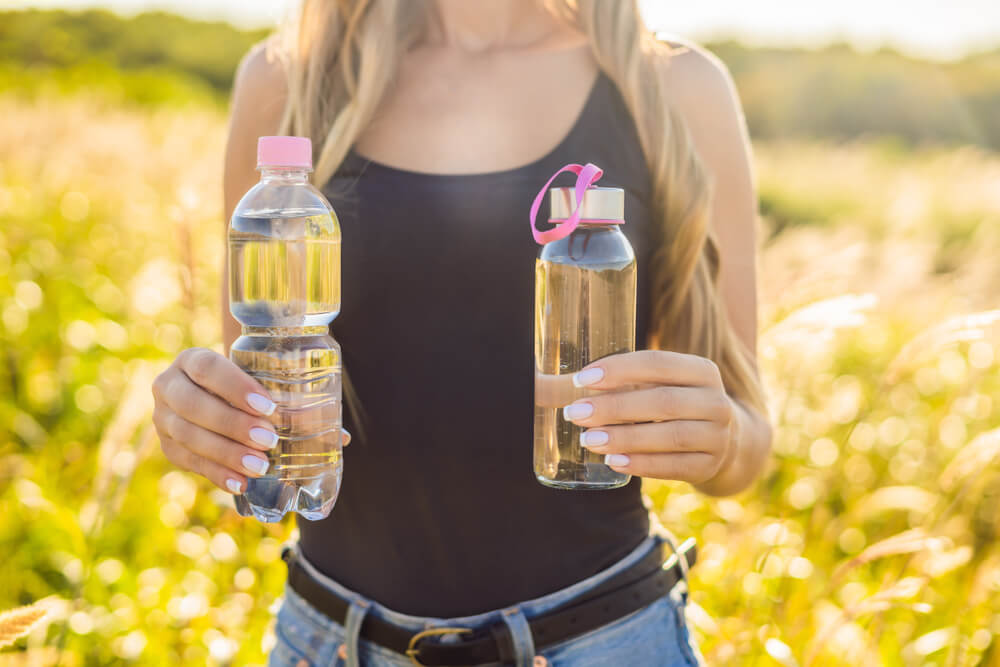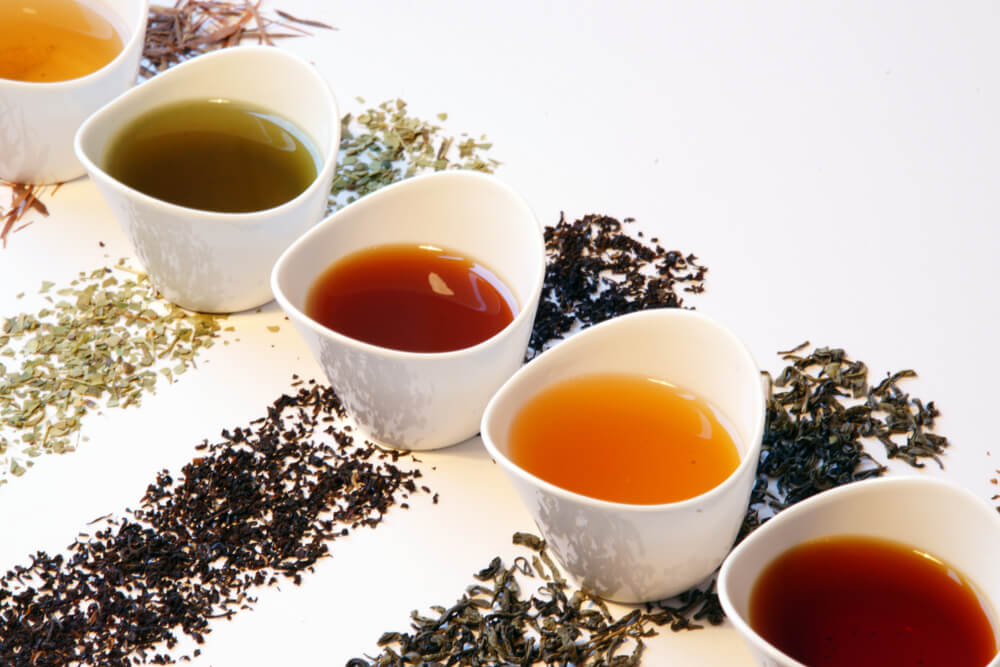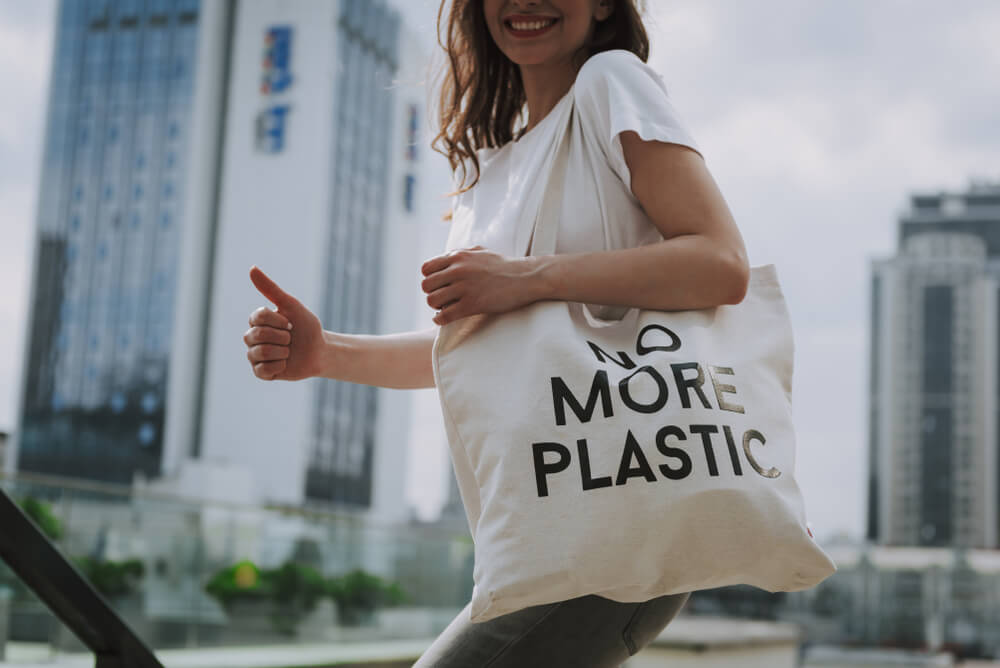Plastic is everywhere. It’s in our homes, our cars, and our clothes. Worse, microplastics are in our water supply, our foods, and our bodies.
Almost no one would reasonably argue that we shouldn’t use less plastics. With billions of tons of plastic in our oceans, our landfills, and blowing around in our yards, it’s clear that this “amazing invention” has become an environmental crisis.
Reducing your plastic use is simple. Start with one thing and expand from there.
Below you’ll find seven simple ways to reduce your plastic use. Pick one and start today. Then choose another one in a few weeks, until you’re using less plastic every day.
If we all do this, we can eliminate millions of tons of plastics every year.
What’s wrong with plastic?
The numbers regarding how much plastic we’ve put into the world are terrifying, especially when we look at the oceans.
This list from National Geographic sums it all up well:
● Half of all plastics ever manufactured have been made in the last 15 years.
● Production increased exponentially, from 2.3 million tons in 1950 to 448 million tons by 2015. Production is expected to double by 2050.
● Every year, about 8 million tons of plastic waste escapes into the oceans from coastal nations. That’s the equivalent of setting five garbage bags full of trash on every foot of coastline around the world.
● Plastics often contain additives making them stronger, more flexible, and durable. But many of these additives can extend the life of products if they become litter, with some estimates ranging to at least 400 years to break down.
Note some of these facts for their impact: Half of all plastics have been made in the last 15 years (despite an awareness of the harm it can do), they can last over 400 years, and 8 million tons end up in the world’s oceans every year. It’s all really scary!
It’s time for all of us to change our ways!
7 Ways to Reduce Your Plastic Use
This list provides you with simple and effective ways to reduce your plastic use without giving up convenience.
1. Don’t use plastic bottles.

This one is simple. Single use plastic bottles–we use them for a few minutes. And they end up in landfills or the ocean for hundreds or thousands of years
Plastic bottles never decompose. Instead, they break down into smaller and smaller pieces of plastic. These microplastics end up in our soil, in the rain, and in our food, and ultimately in our bodies.
The simplest way to avoid using plastic bottles is to use a glass or buy a reusable water bottle, like the one from Kool8. A stainless-steel water bottle will last for years, keeps drink hot or cold, and will replace thousands of water bottles. Using a stainless-steel bottle is a great alternative to disposable plastic.
2. No more plastic shopping bags.
Plastic shopping bags are everywhere. They fly through the air, float in the ocean, and clog up everything on the planet. In the US alone, consumers use 100 billion plastic bags in a single year. 100 BILLION! And that’s just the US!
Companies are making some efforts. Walmart, for example, offers plastic bag recycling in their stores now. Still, it’s not enough. Most plastic bags aren’t being recycled. They’re ending up in landfills, blowing in the streets, and in our waterways.
There are a couple of simple solutions. Reusable bags are great. They come in all shapes and sizes, last for years, and usually hold more than a flimsy plastic bag.
Paper bags are the next best choice. Usually made from recycled paper, they’re sturdy, recyclable, and decompose.
In short, plastic bags are a menace that is entirely unnecessary.
3. Single use plastic utensils.
These are strange choices. While we’re out in nature, at a picnic or camping, we use utensils that will never biodegrade. Meanwhile, it’s not a lot heavier to carry metal utensils that you’ll have for years. Fortunately, there is almost always a way to avoid using single use plastic utensils. All it takes is a little forethought.
One solution is to use regular metal utensils. If that will not work for your needs, there are also utensils sets that fold up like a pocketknife. Made of metal, they’ll last for years.
Of course, there are lots of foods that don’t need utensils. Sandwiches are perfect (as long as you wrap them in butcher paper or put them in reusable containers).
4. Use bar soap
Did you know that many body washes contain microplastics? Manufacturers use those microplastics to put fun little beads, exfoliants, and other tiny pieces of plastic into the soap.
A real, natural bar of soap is the simple answer. There are hundreds of soap manufacturers, large and small, selling great soaps that don’t have plastics in them. And you can also find bar soap specially designed to shampoo your hair!
One place we don’t think about bar soap any longer is for hand washing. But because soap is alkaline and kills most germs on contact, there’s little risk of germs being passed by a bar of soap. The structure of the soap molecules can even shatter the shell of COVID-19 viruses.
So look for a high-quality hand soap that smells nice and works for you.
5. Drink loose tea

It’s become a trend among some of the bigger tea companies to use tea bags made from plastic. So while they sell their teas because they’re “natural” and delicious, they encase those teas in a plastic bag that will be in the environment for hundreds of years.
Loose tea is less expensive per ounce, tastes even better, and lasts a long time. You can find every imaginable flavor and style.
You can even use loose tea in your reusable water bottle.
Learn more about using loose tea for your beverages here.
6. Glass, steel, wood, or iron
Nearly everything has plastic in it, including important kitchen equipment like frying pans and food storage containers.
Rather than buying items with plastic, choose plastic free alternatives.
● For pots and pans, choose stainless steel or cast iron. They’ll last for years and you won’t eat the coating they put on “non-stick” pans.
● Use metal utensils. You can do that if you’re using stainless steel or cast iron.
● Choose wooden utensils for a scratch-free alternative. Bamboo is a splendid choice.
● Replace plastic containers with glass food storage containers. They don’t stain when you put spaghetti sauce in them.
● Wooden or bamboo cutting boards are perfect to replace plastic ones. While we might use a plastic cutting board for years, every time you cut a tiny chunk off, you might be eating it later.
Look for glass, steel, wood, or iron alternatives to all the pots, pans, utensils, and storage containers in your home.
7. A better toothbrush
Toothbrushes are made with plastics, nylon, and other synthetics materials. And they can’t be recycled.
Choose a toothbrush with a wooden or bamboo handle and natural bristles in replaceable heads. They last a long time and there’s a large variety of styles available. Plus, when you need new bristles, you can simply buy a new head for it.
Bonus: When you throw it out, it’ll biodegrade instead being proof of your good dental hygiene for a thousand years.
The Best Way to Do It
The easiest way to figure out how to avoid plastics in your life is to ask yourself how your great-grandmother did it. She used a broom to sweep up, not a plastic fuzzy pad on a stick that you throw out. She used a mop made of cotton, not a rubber and plastic contraption.
If we each reduce our plastic use by even 10%, the world would become a much nicer, cleaner place. And the fish will love you for it!

